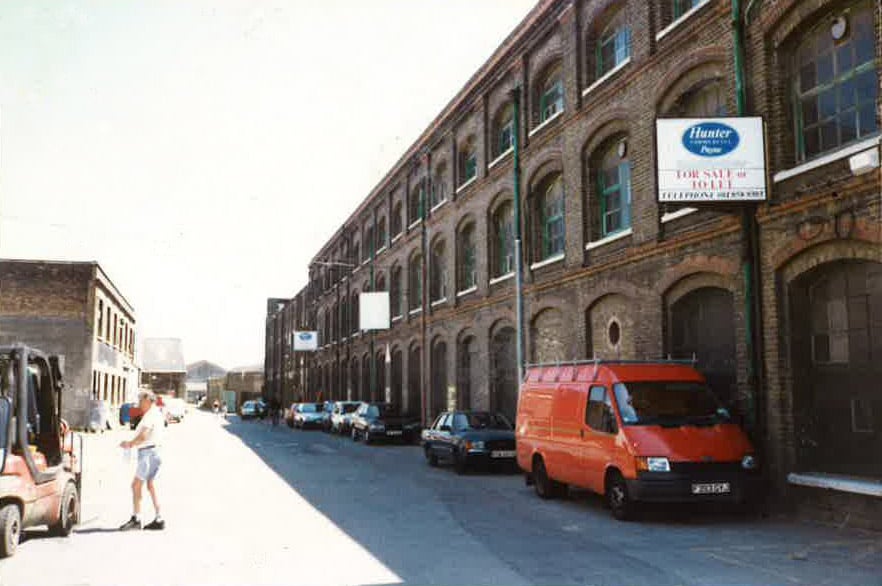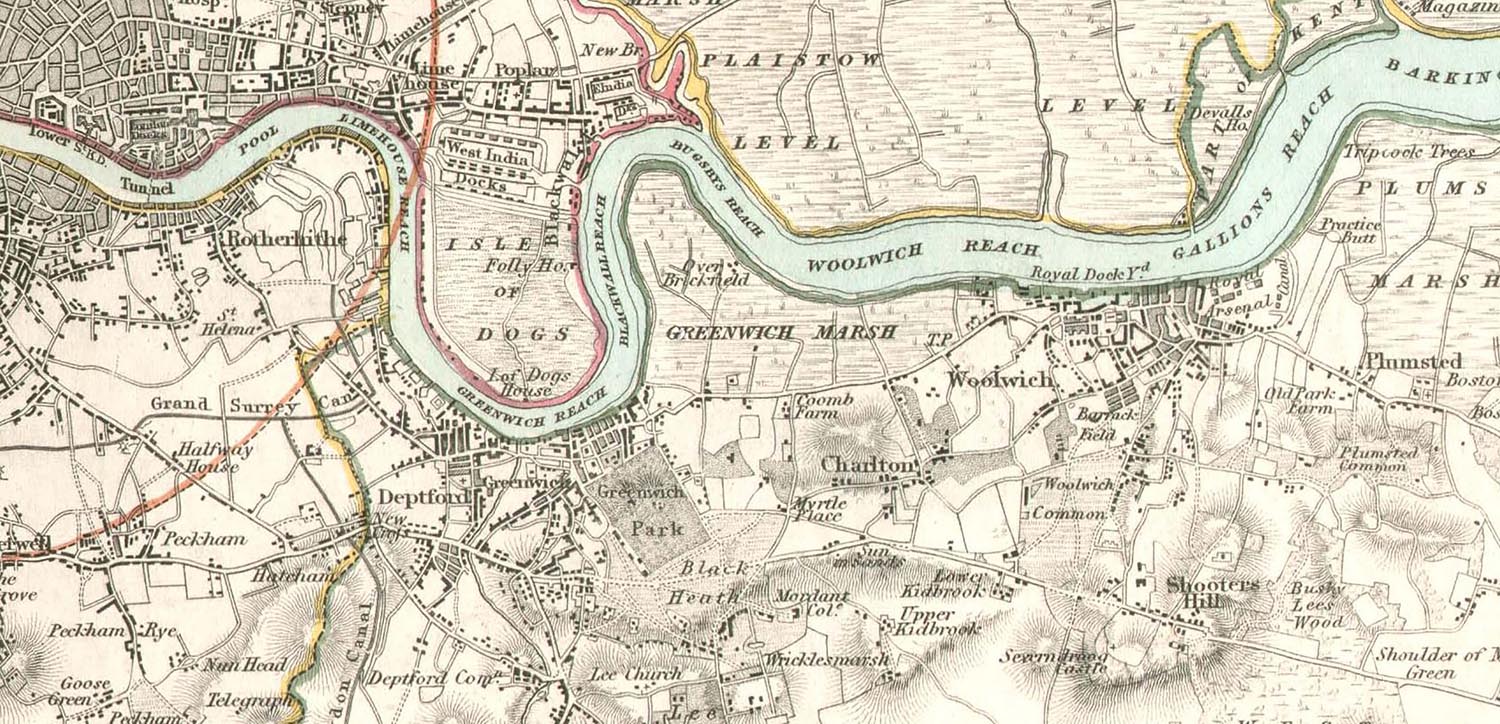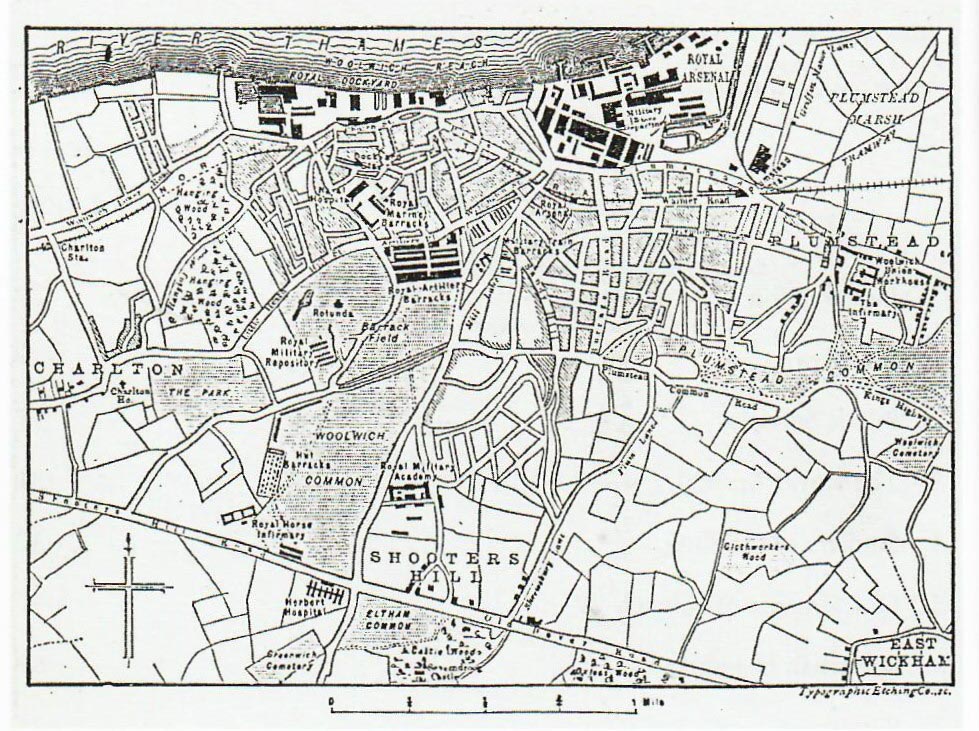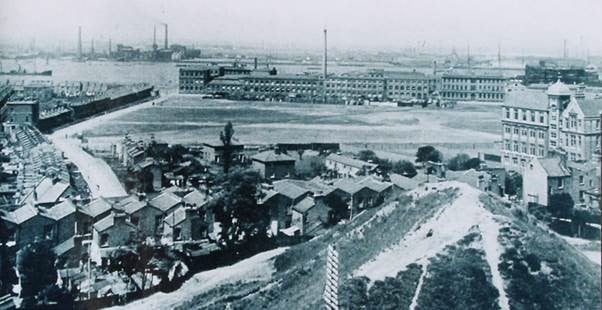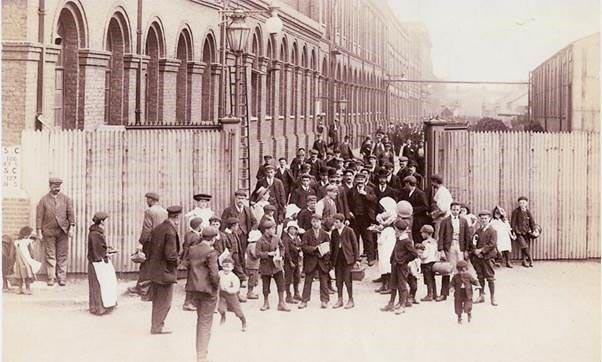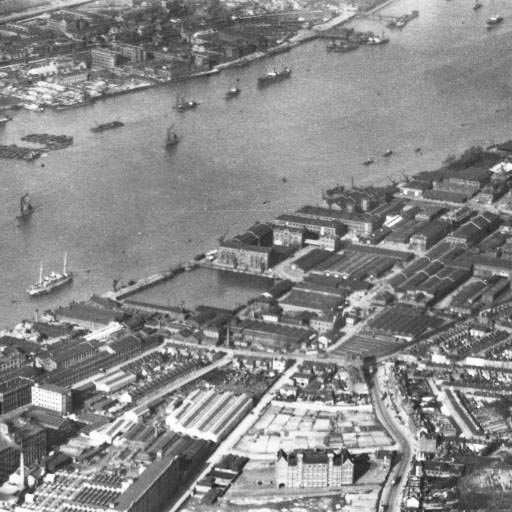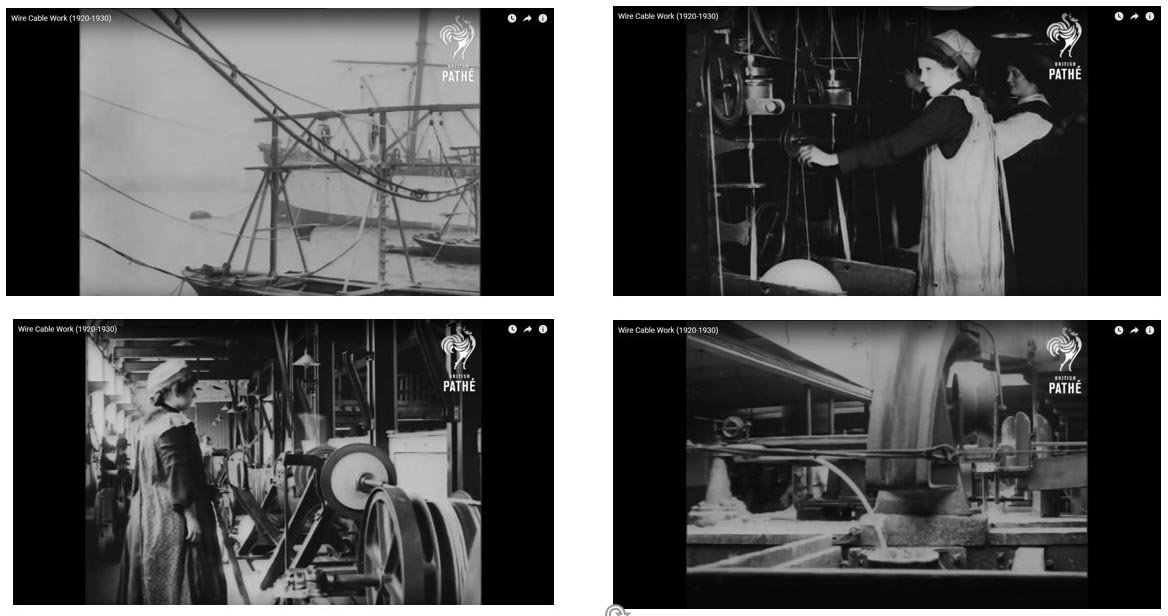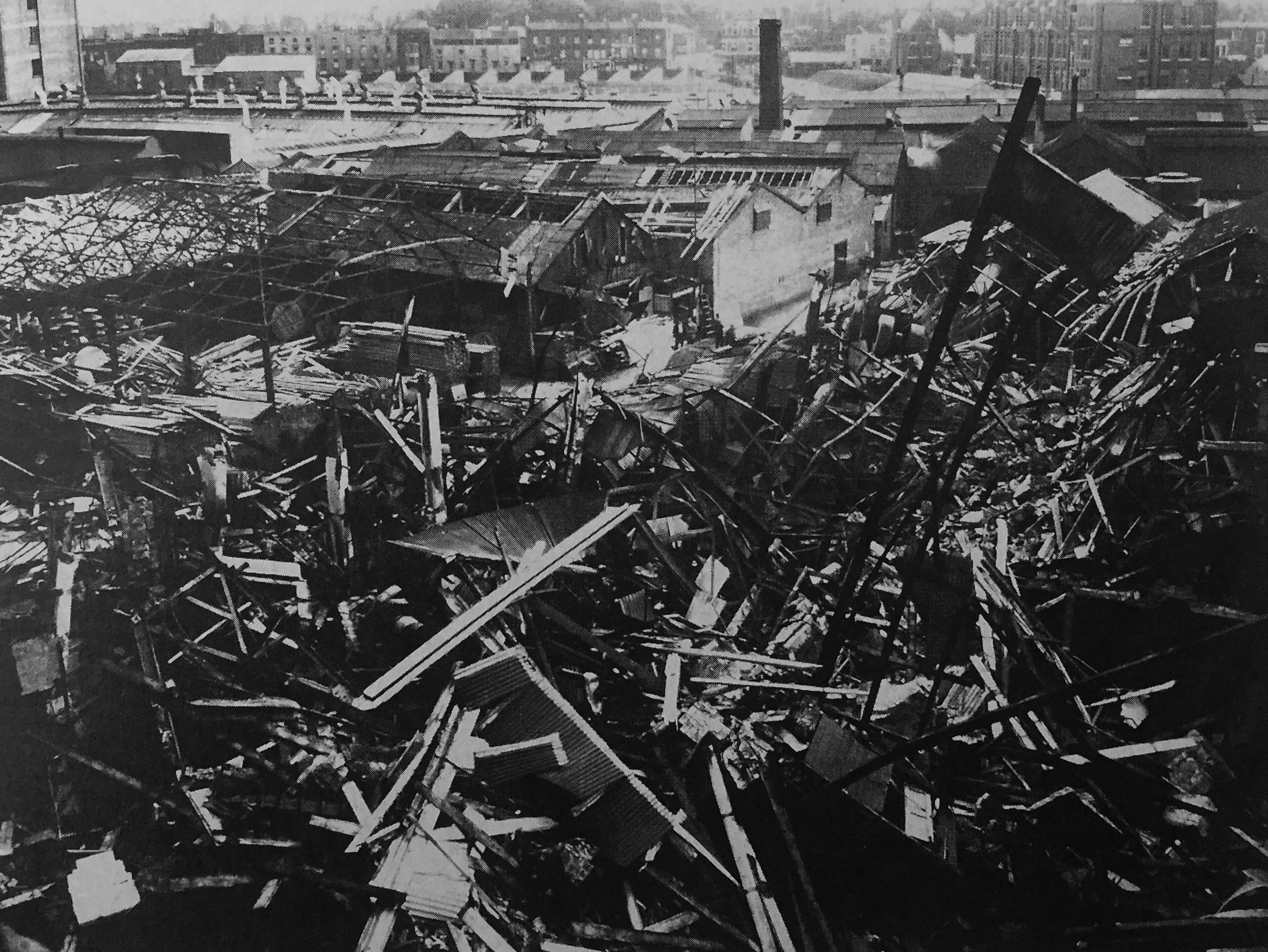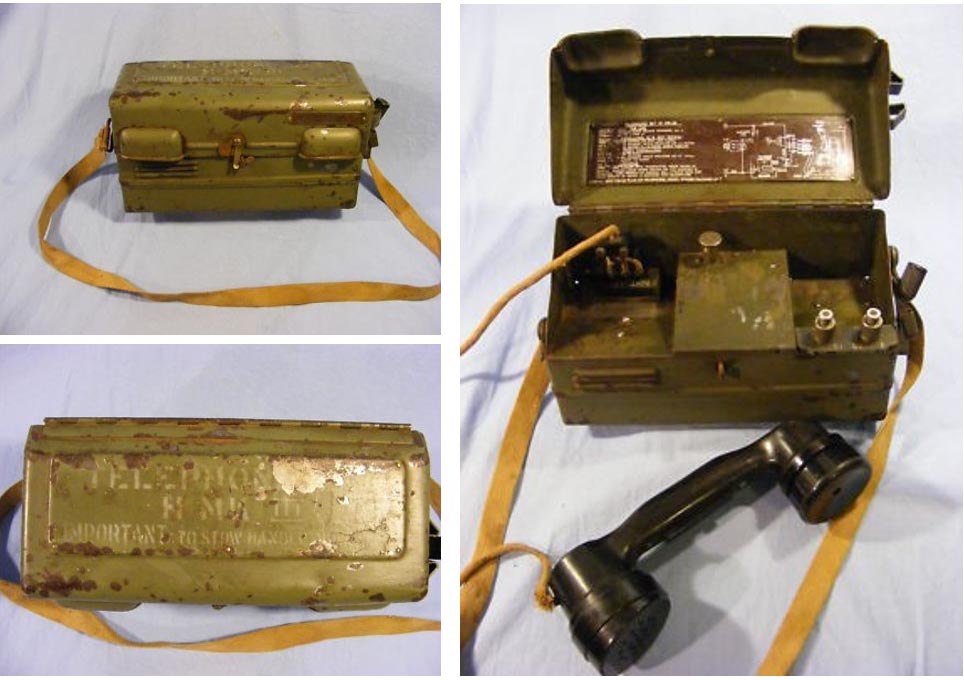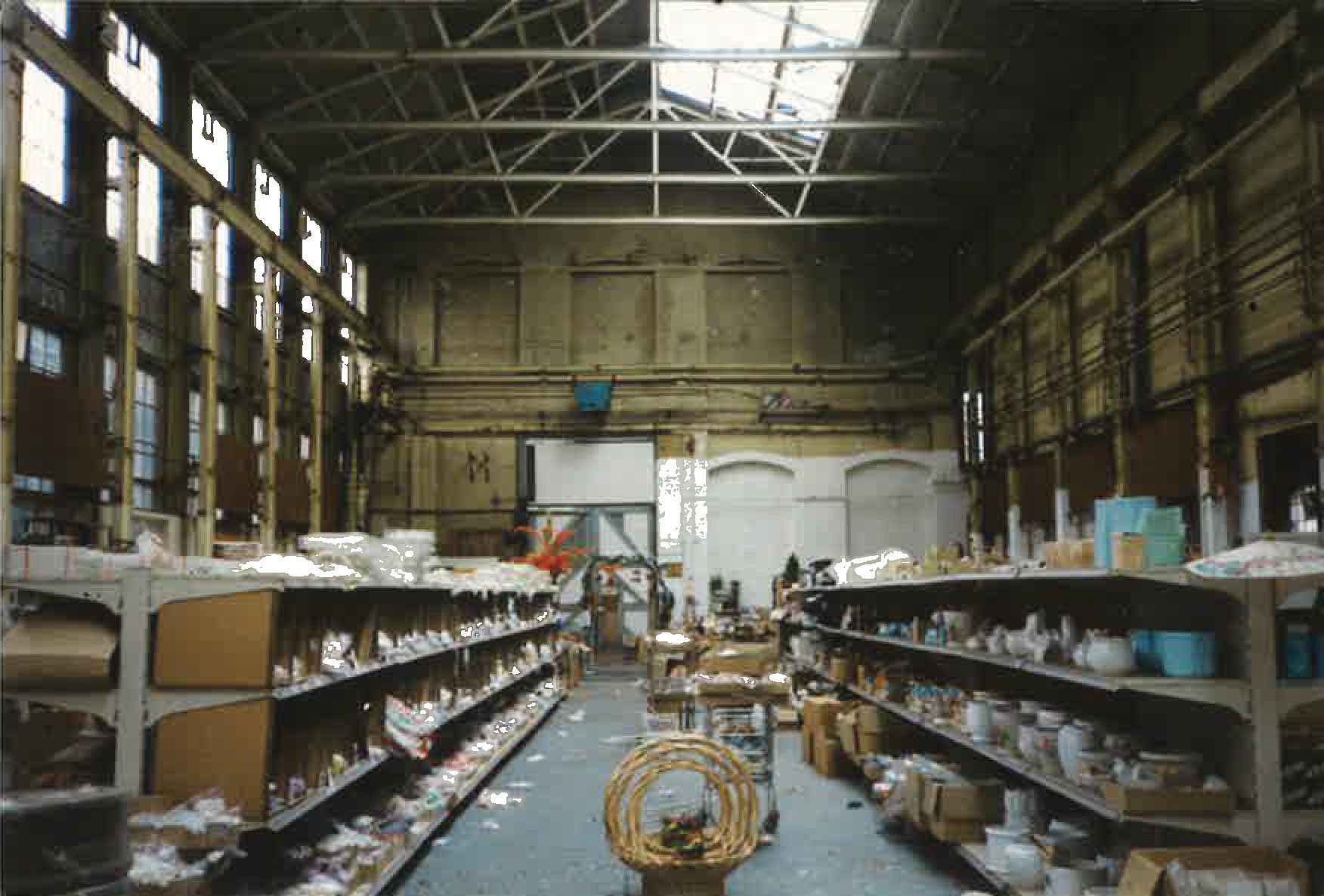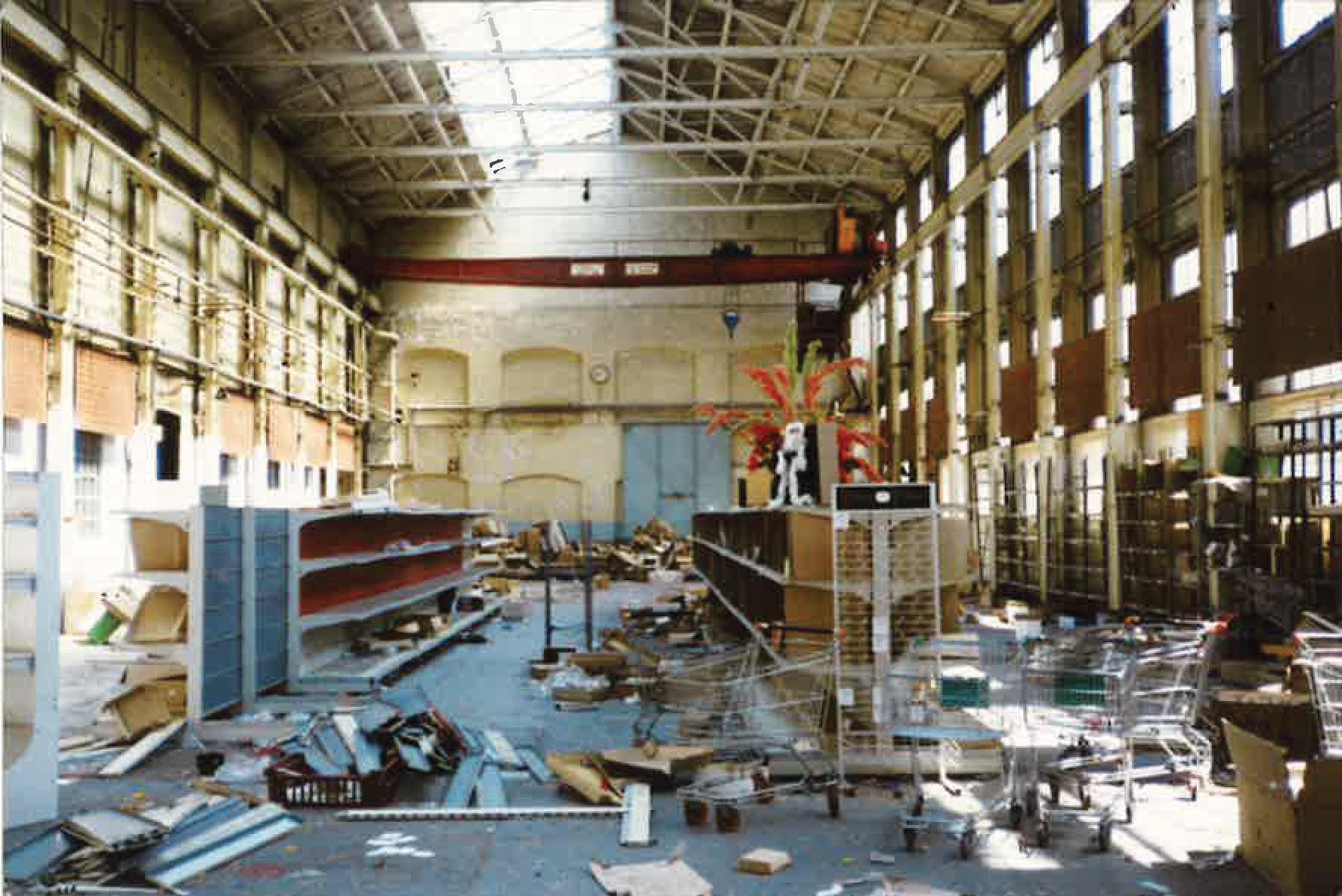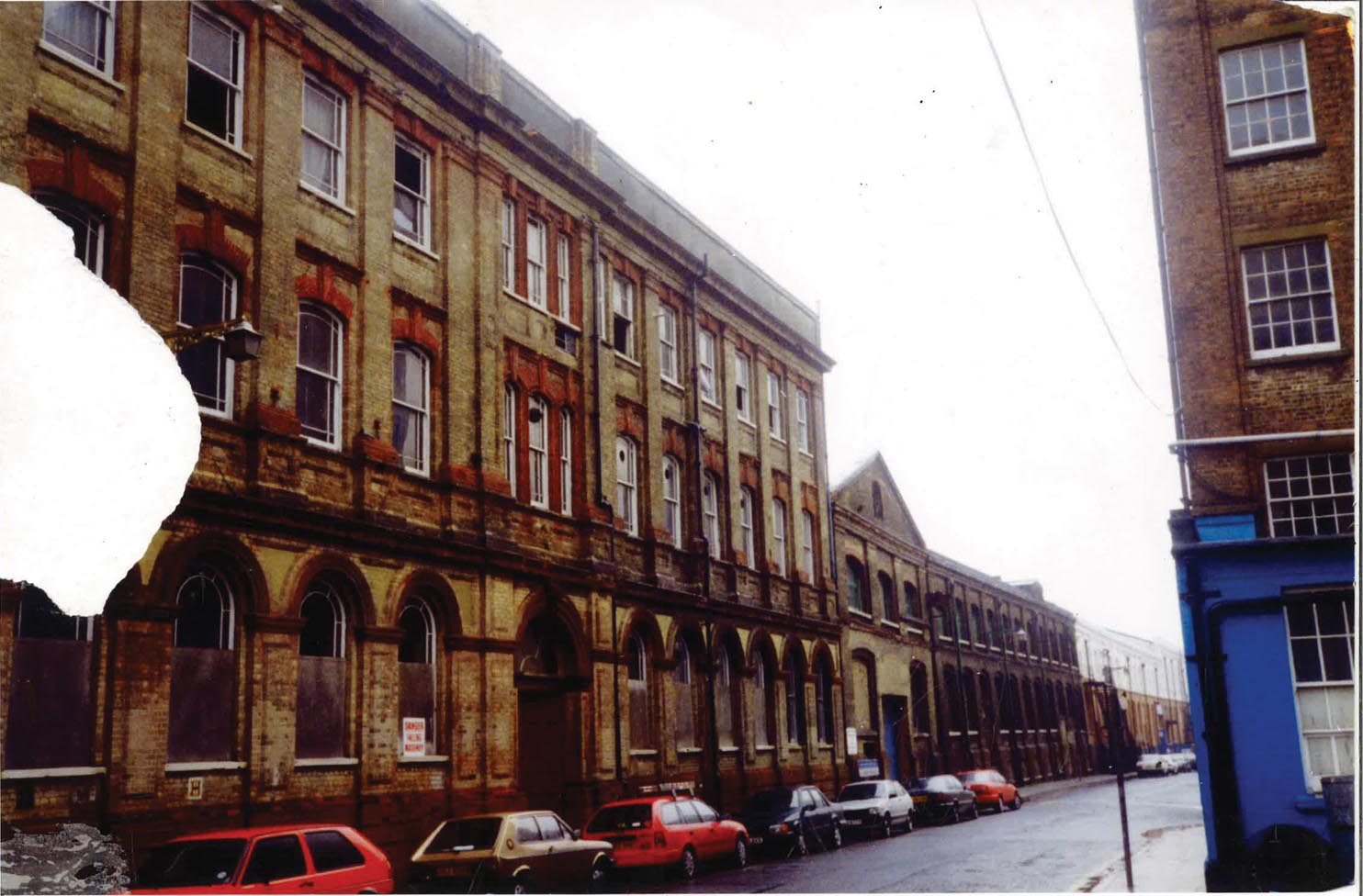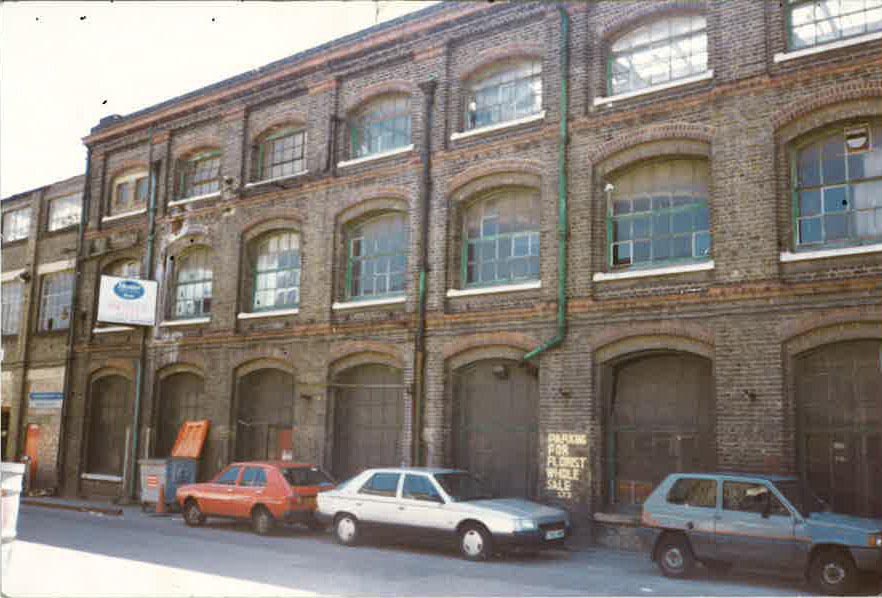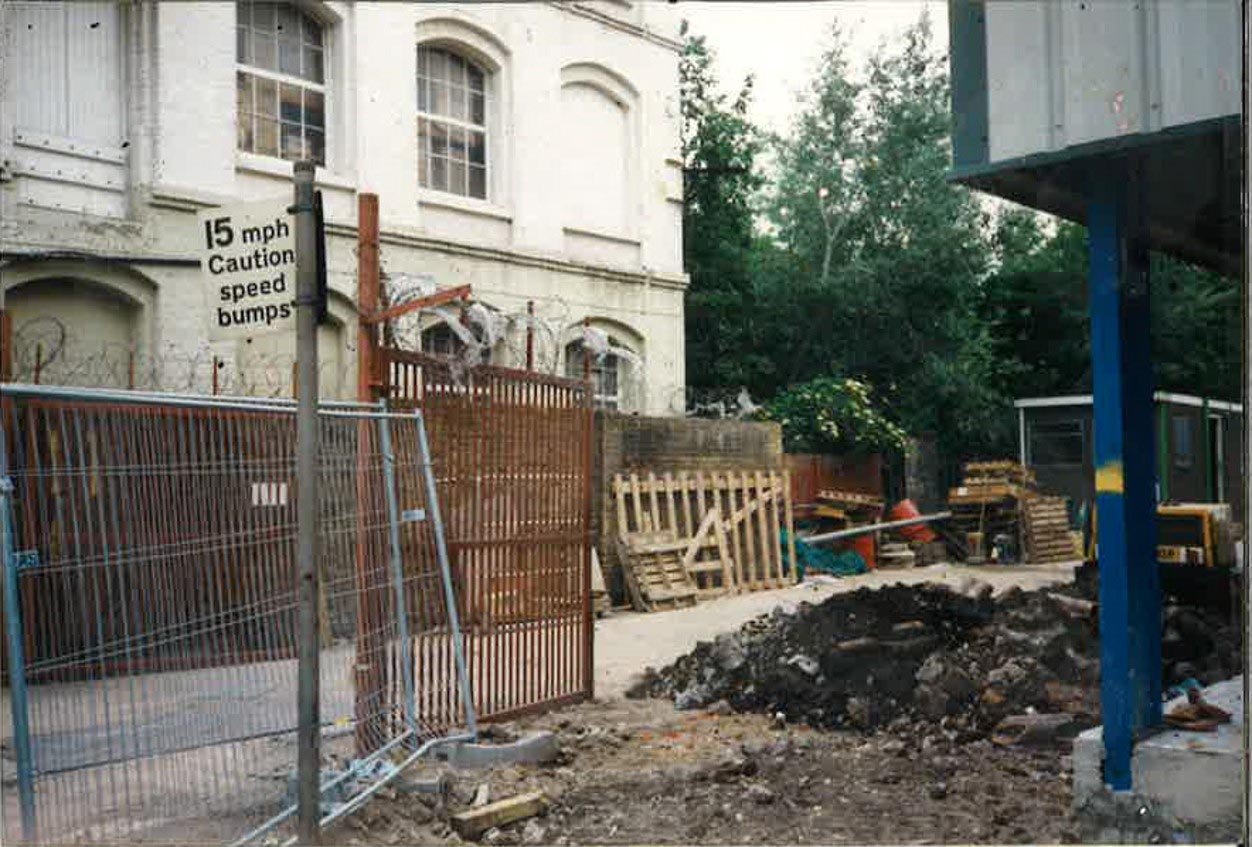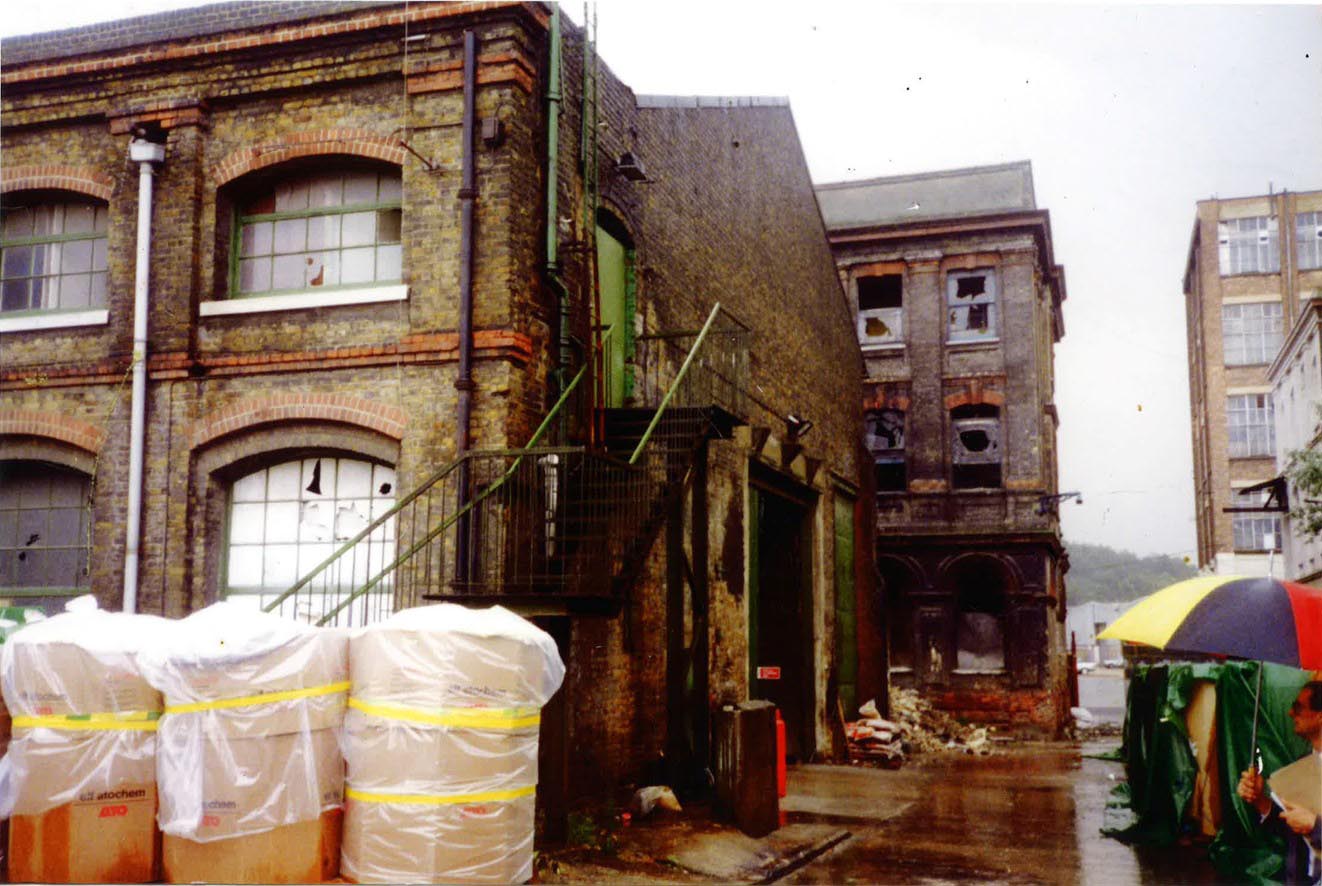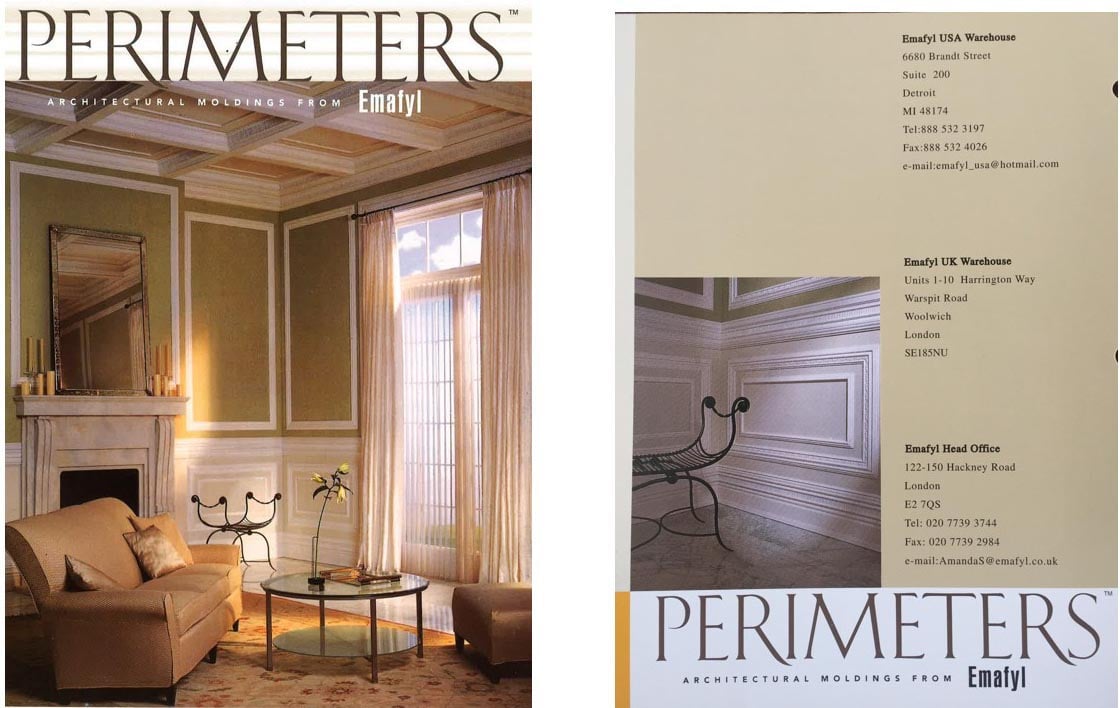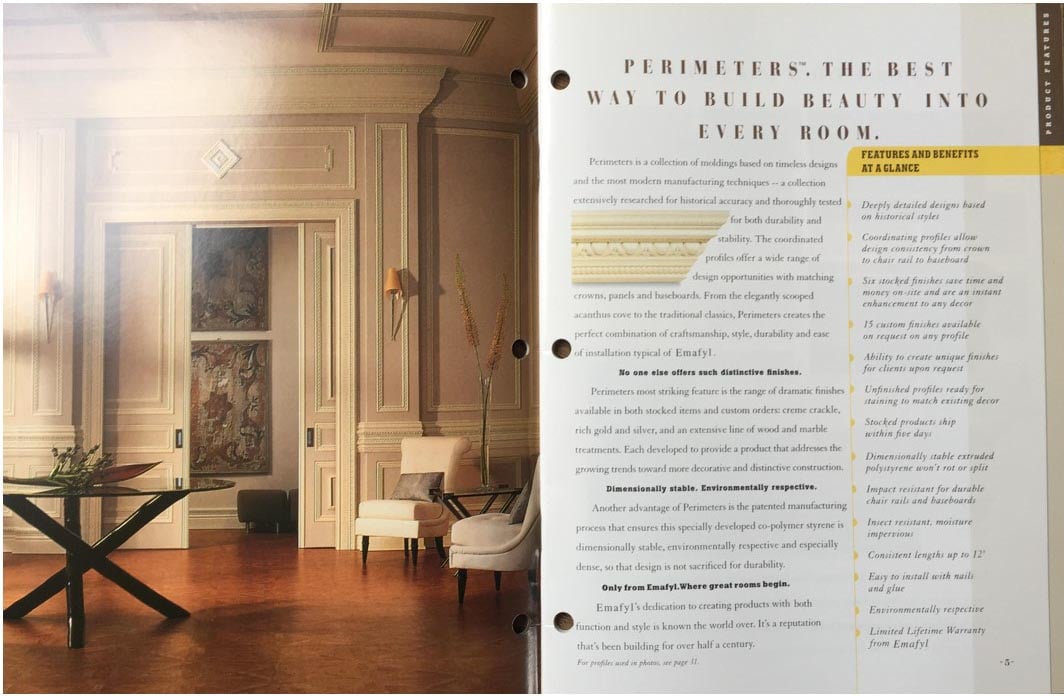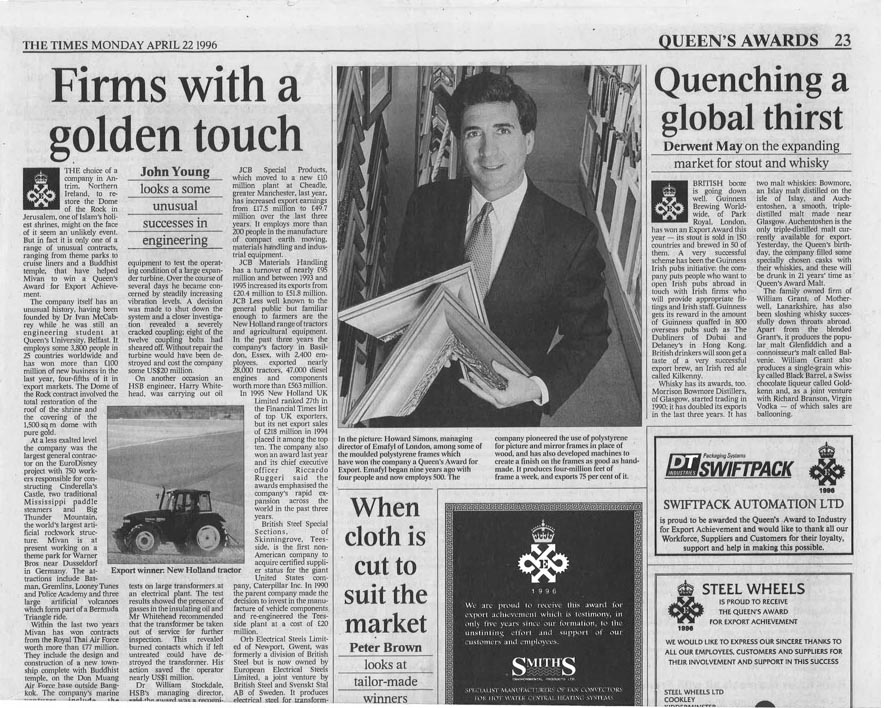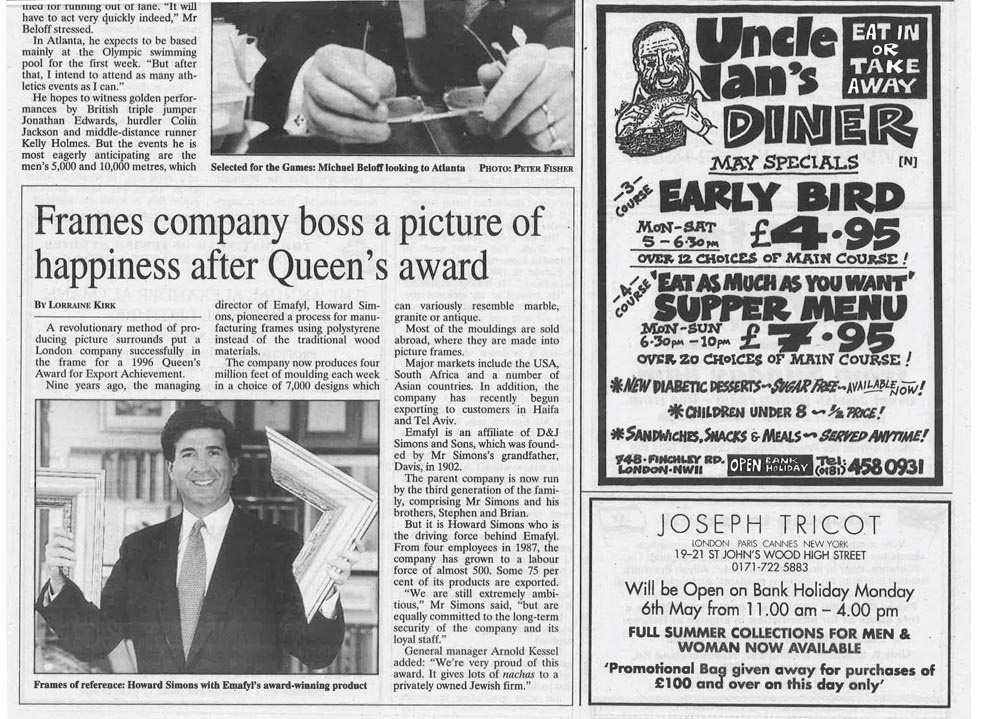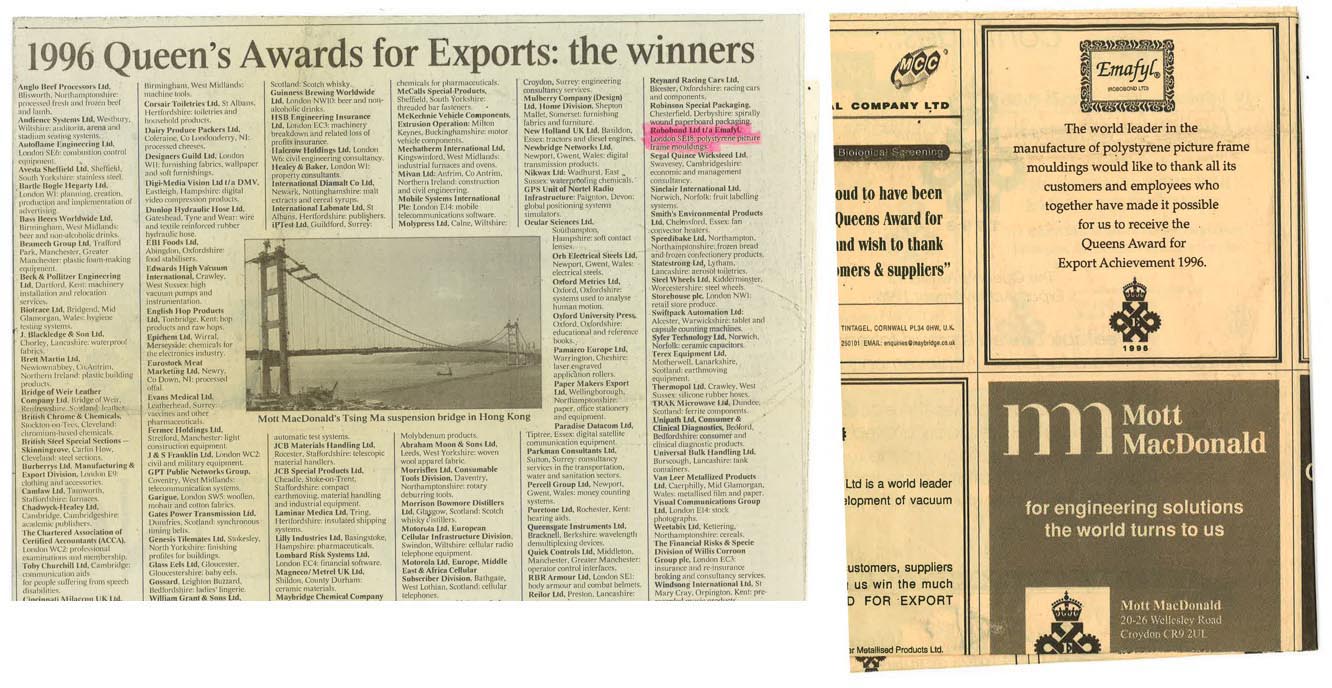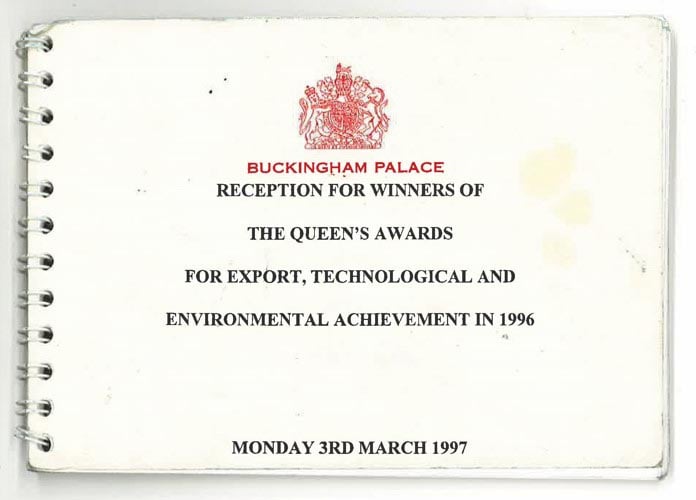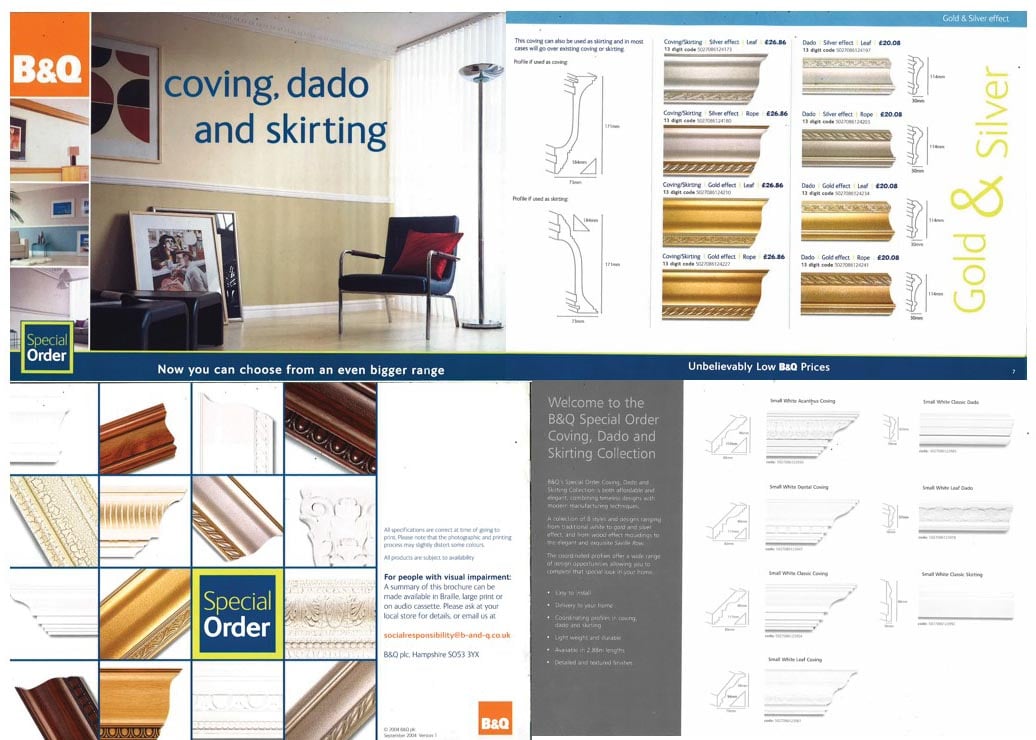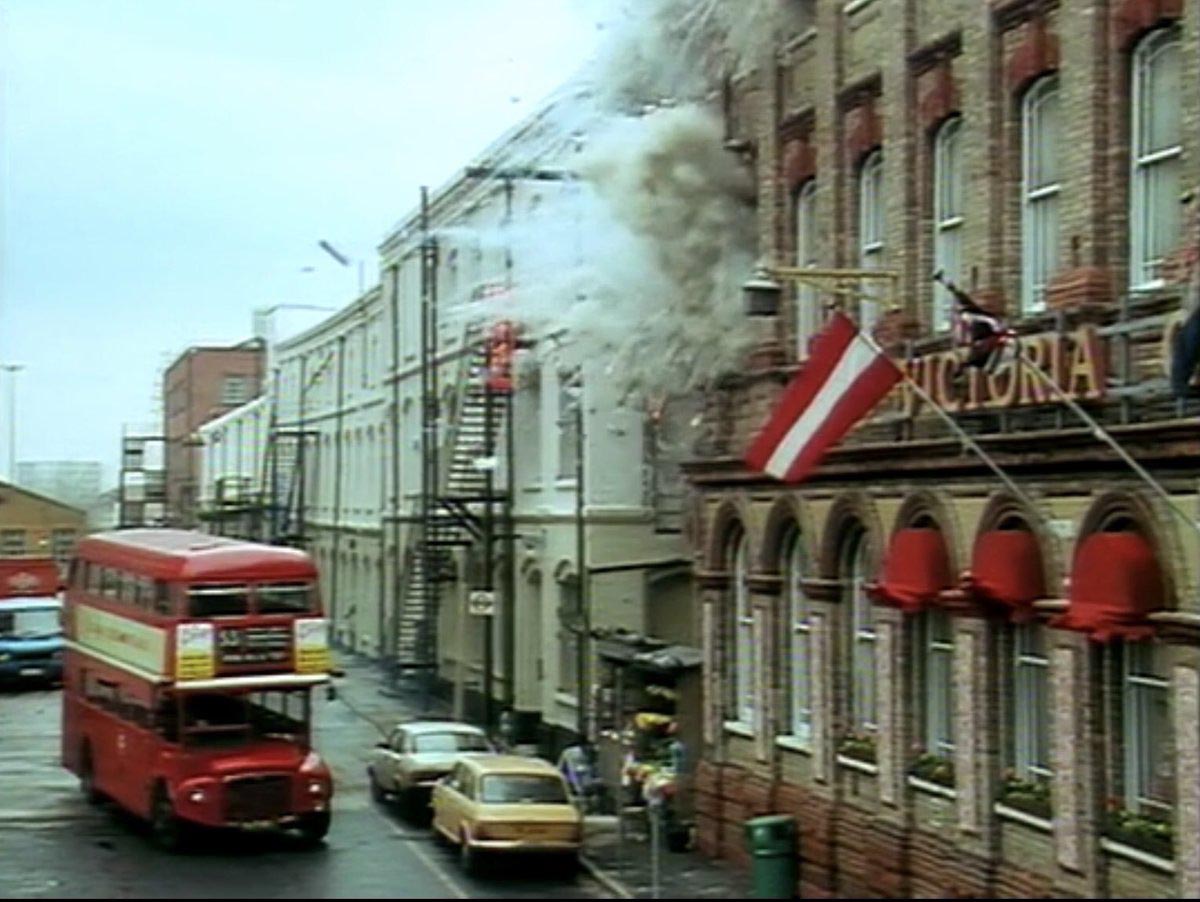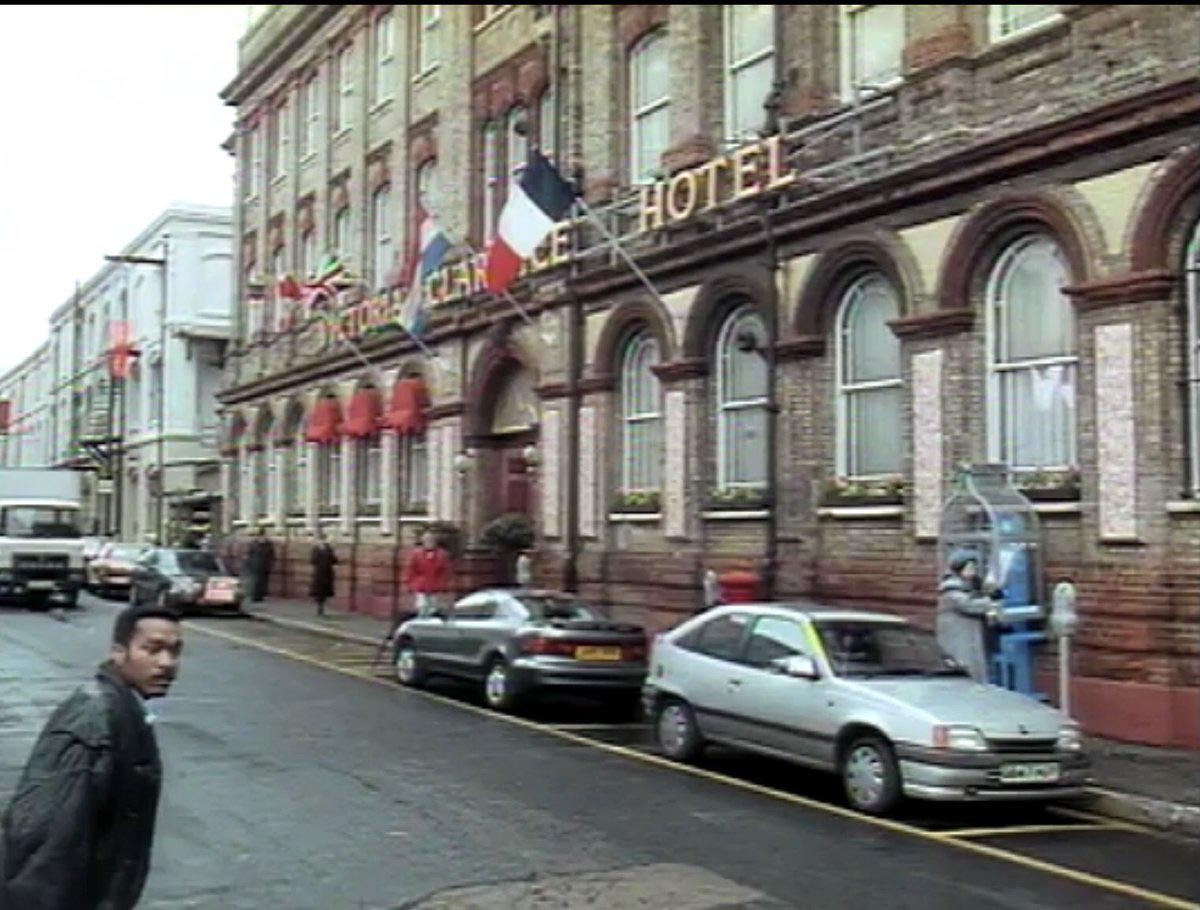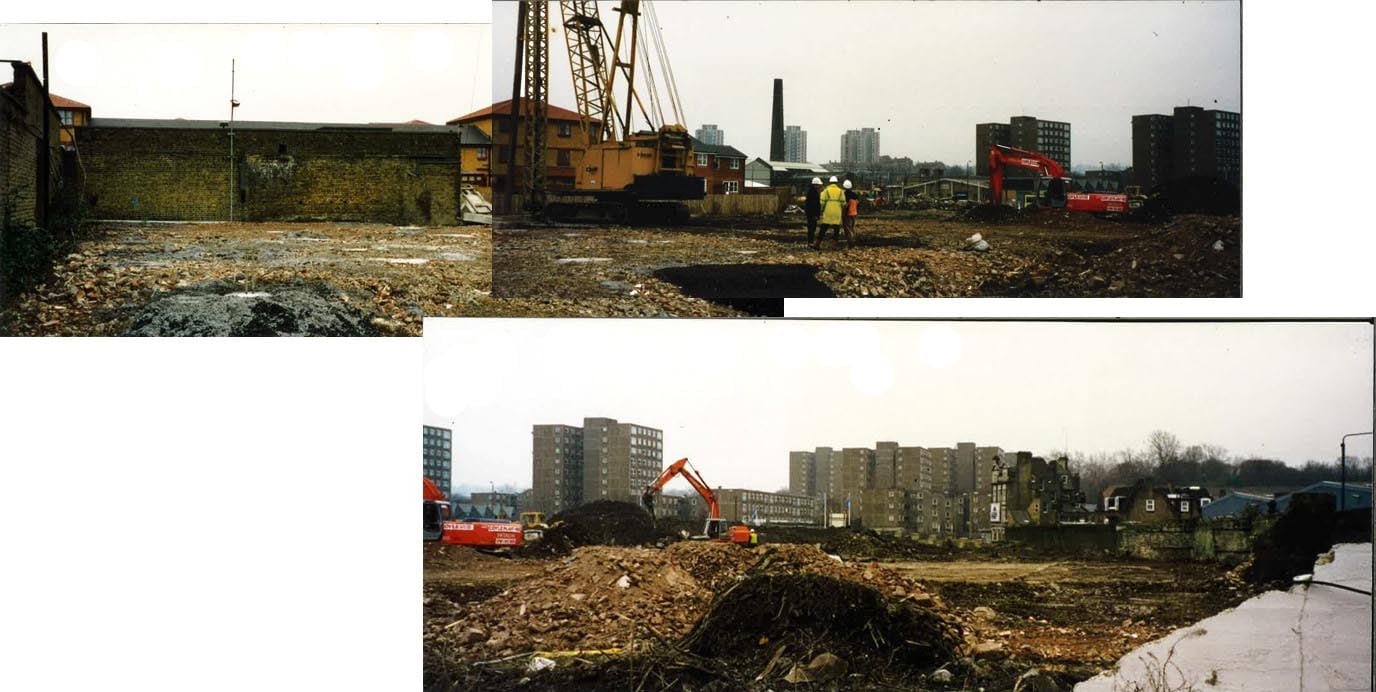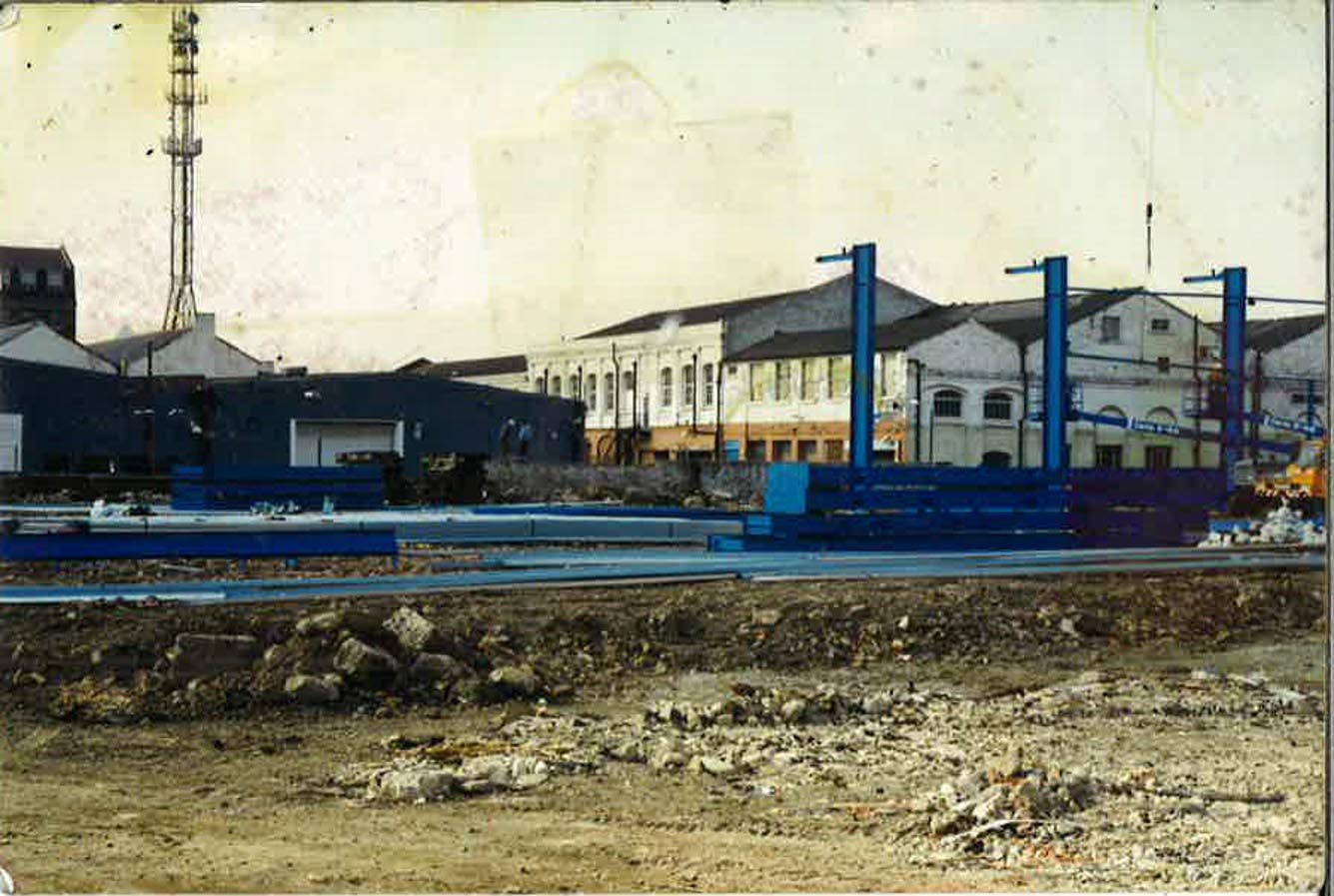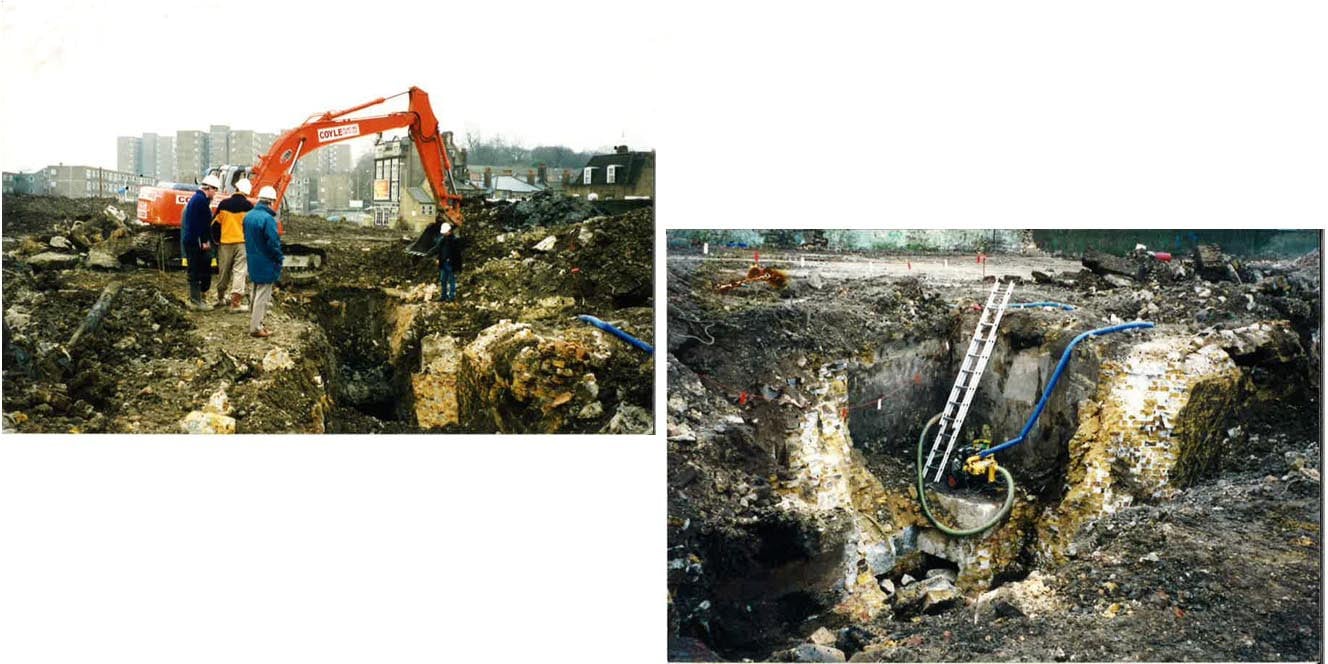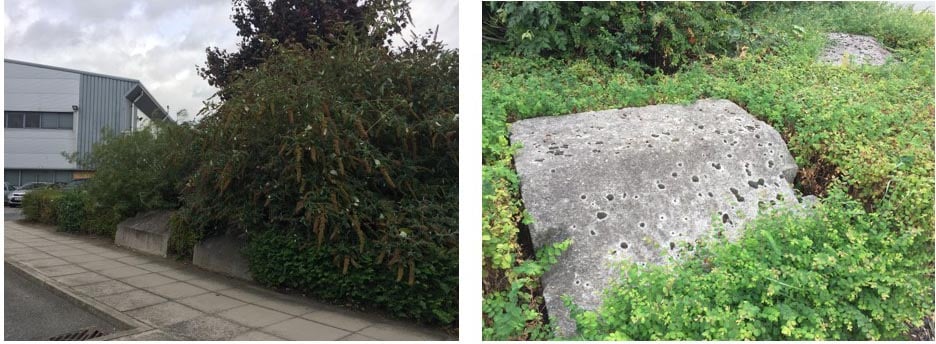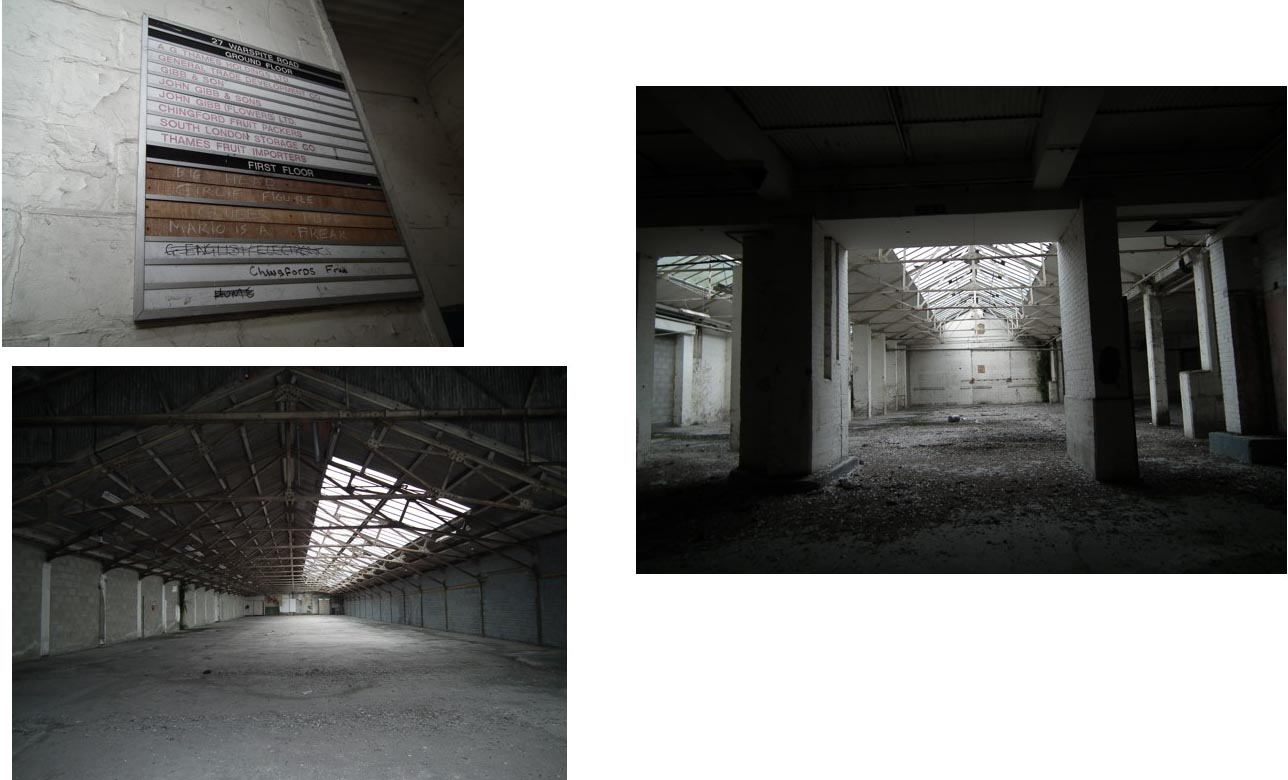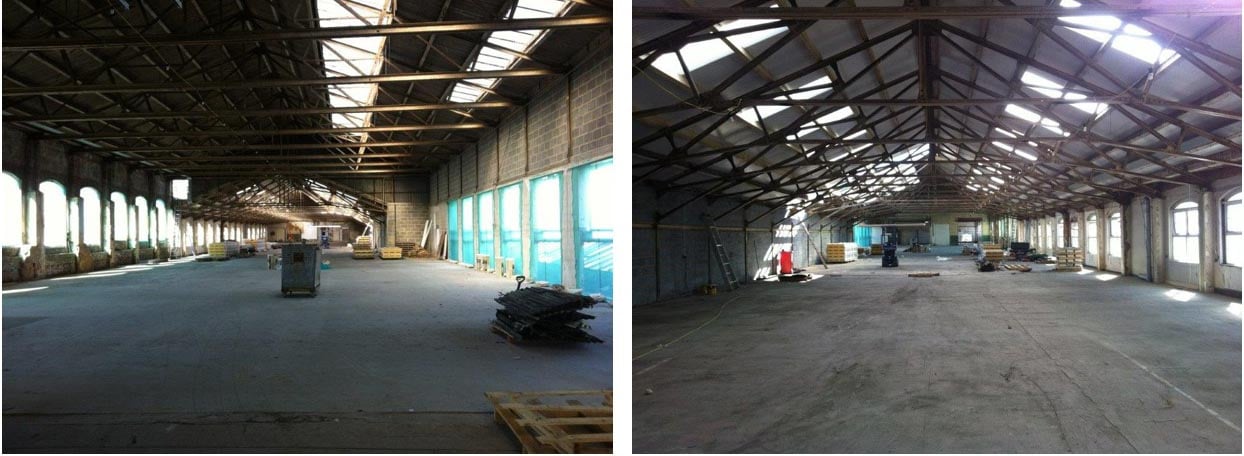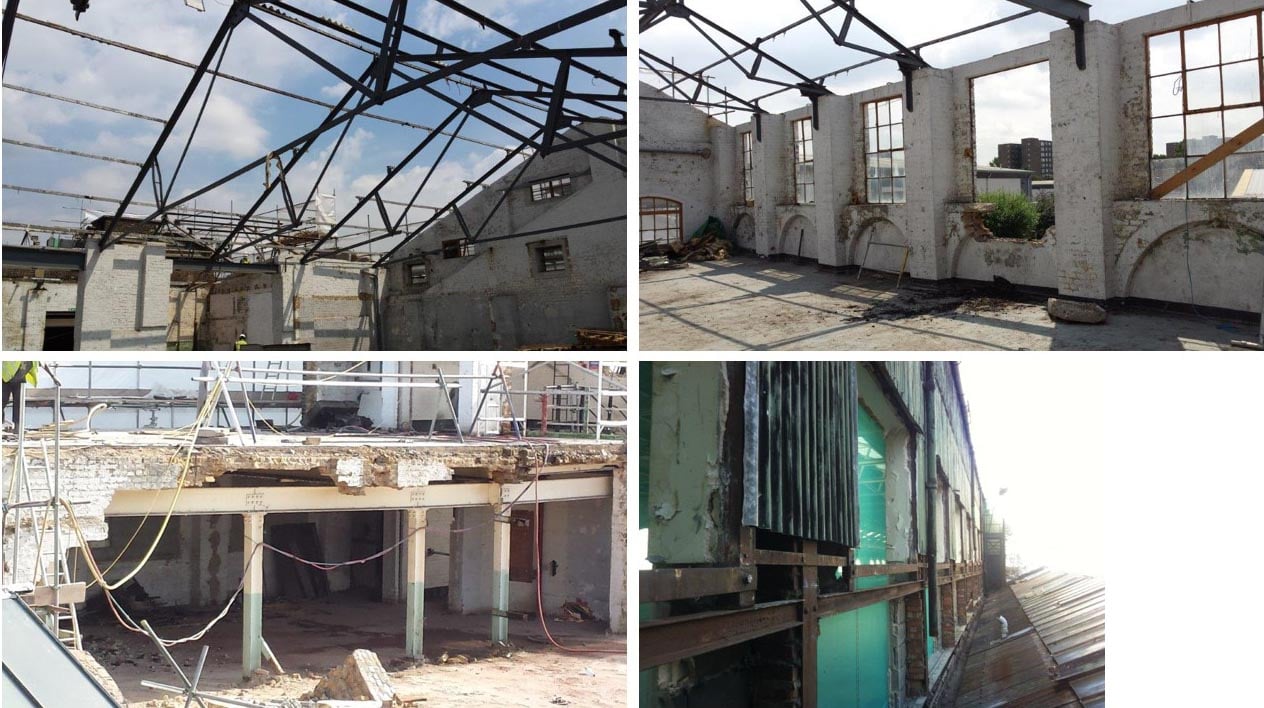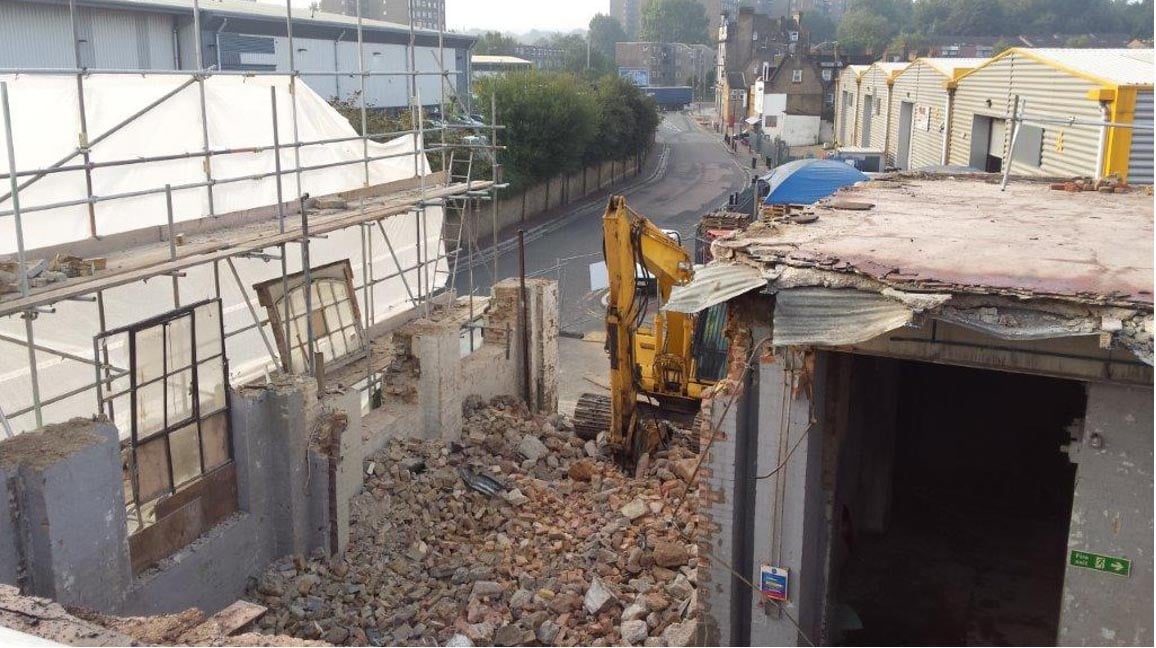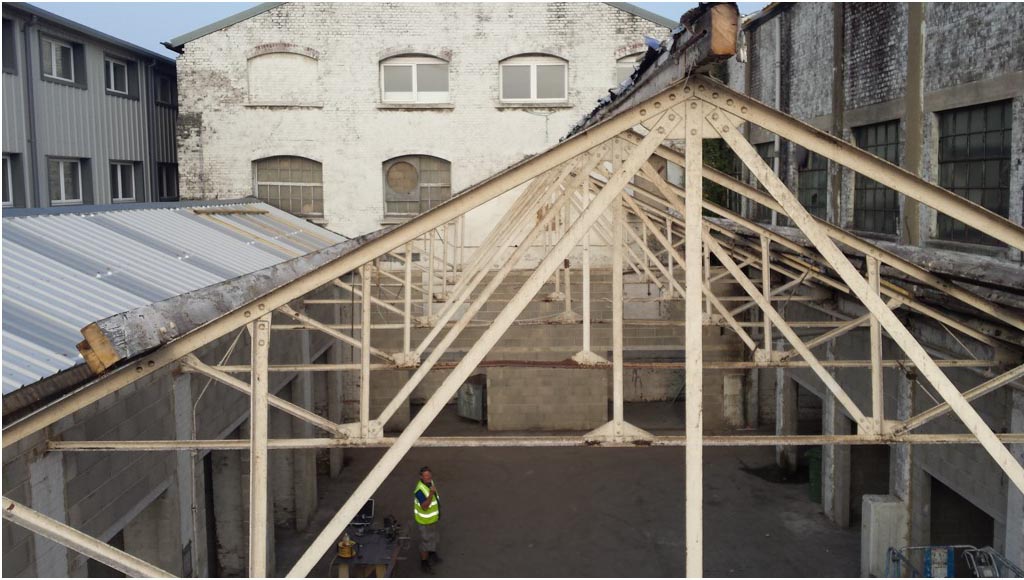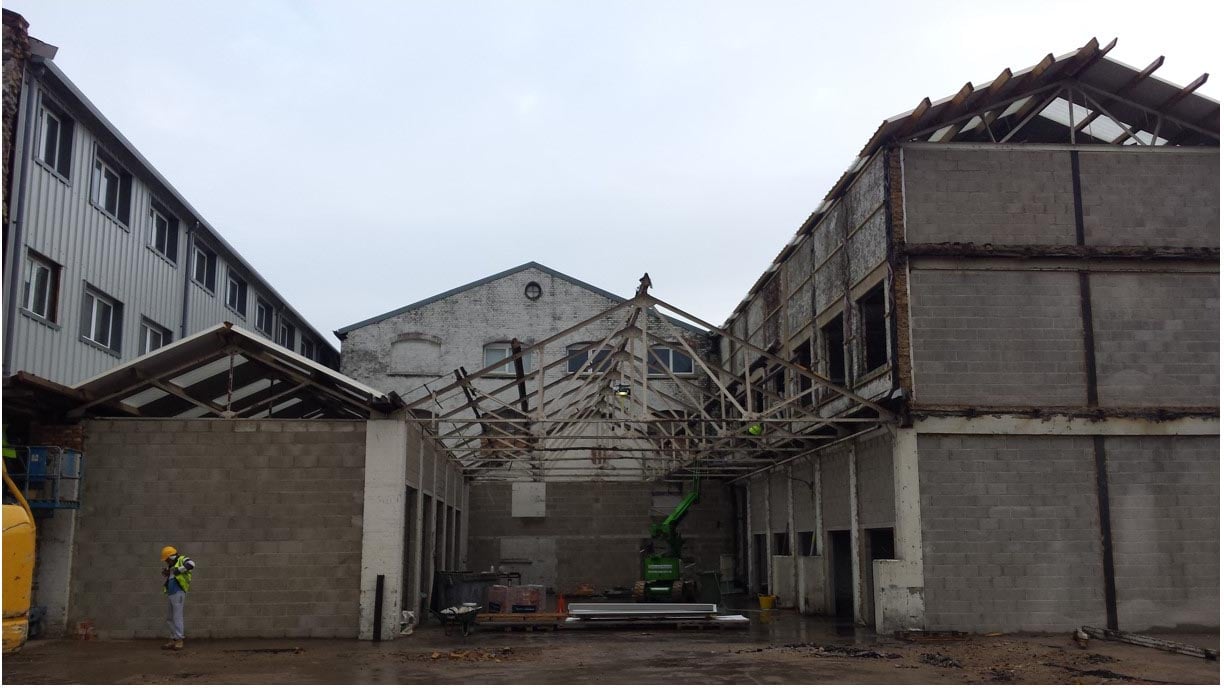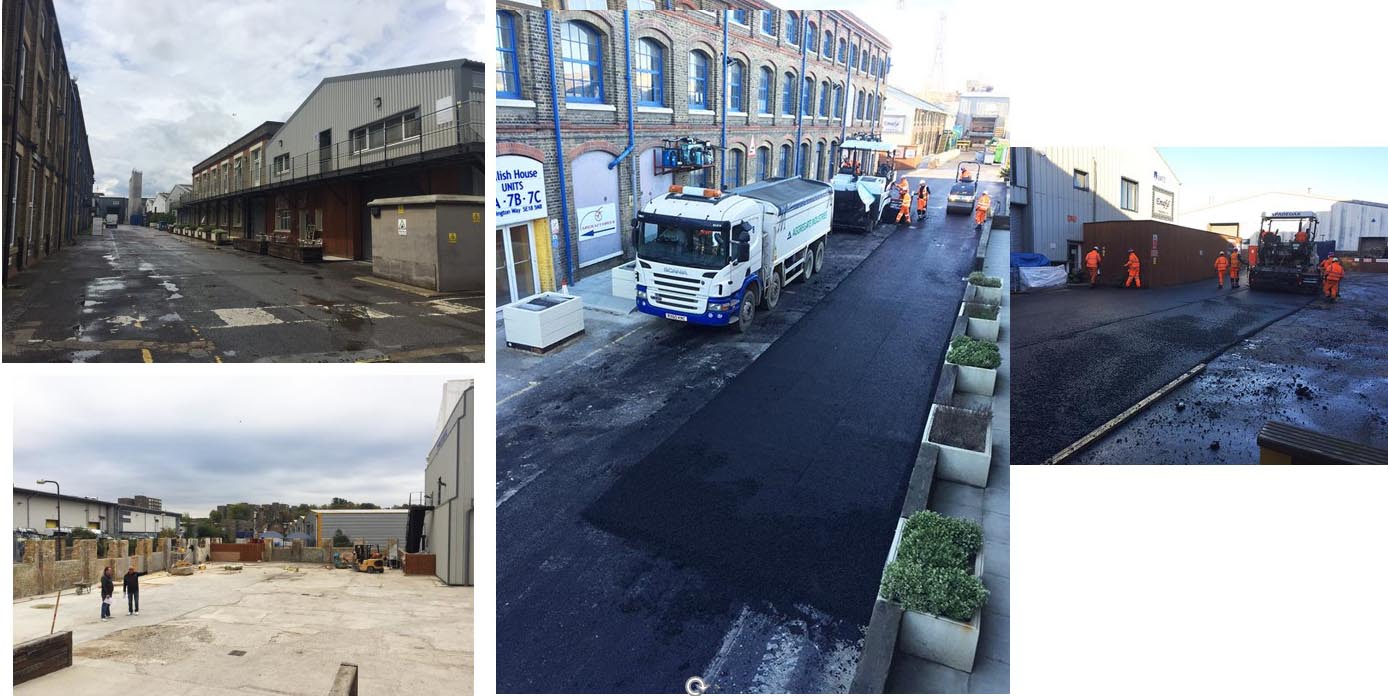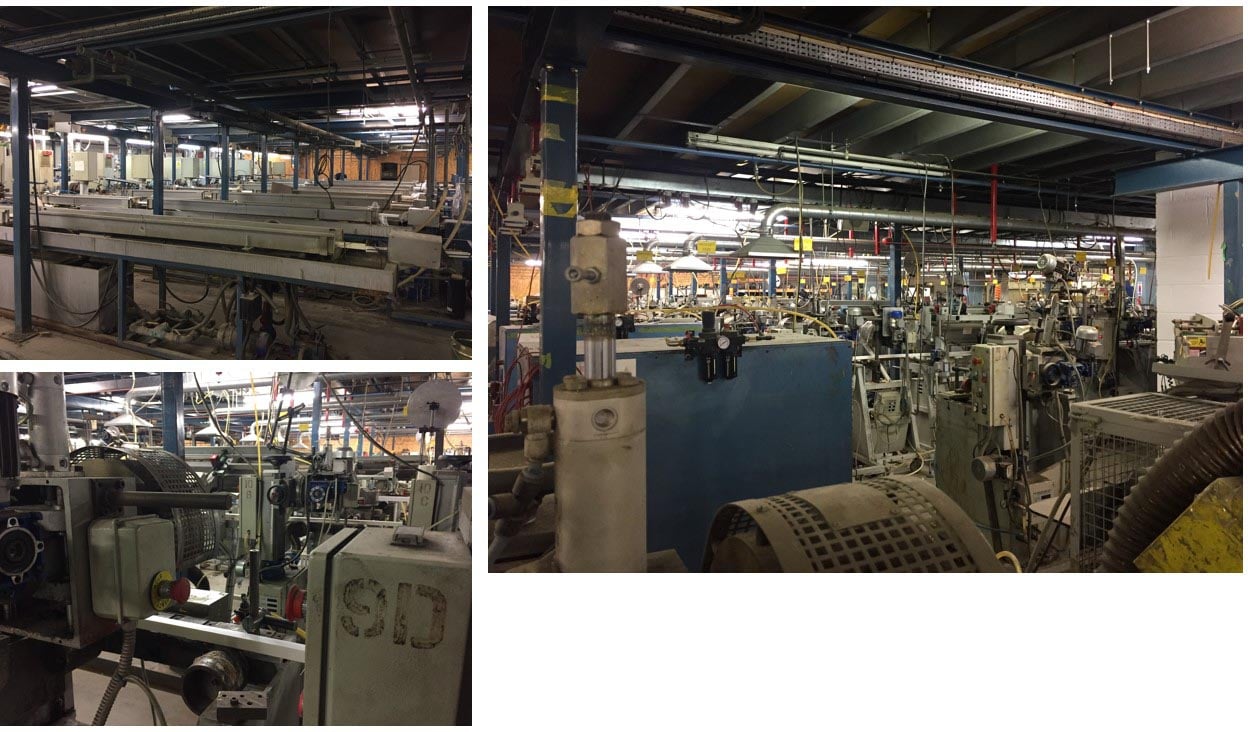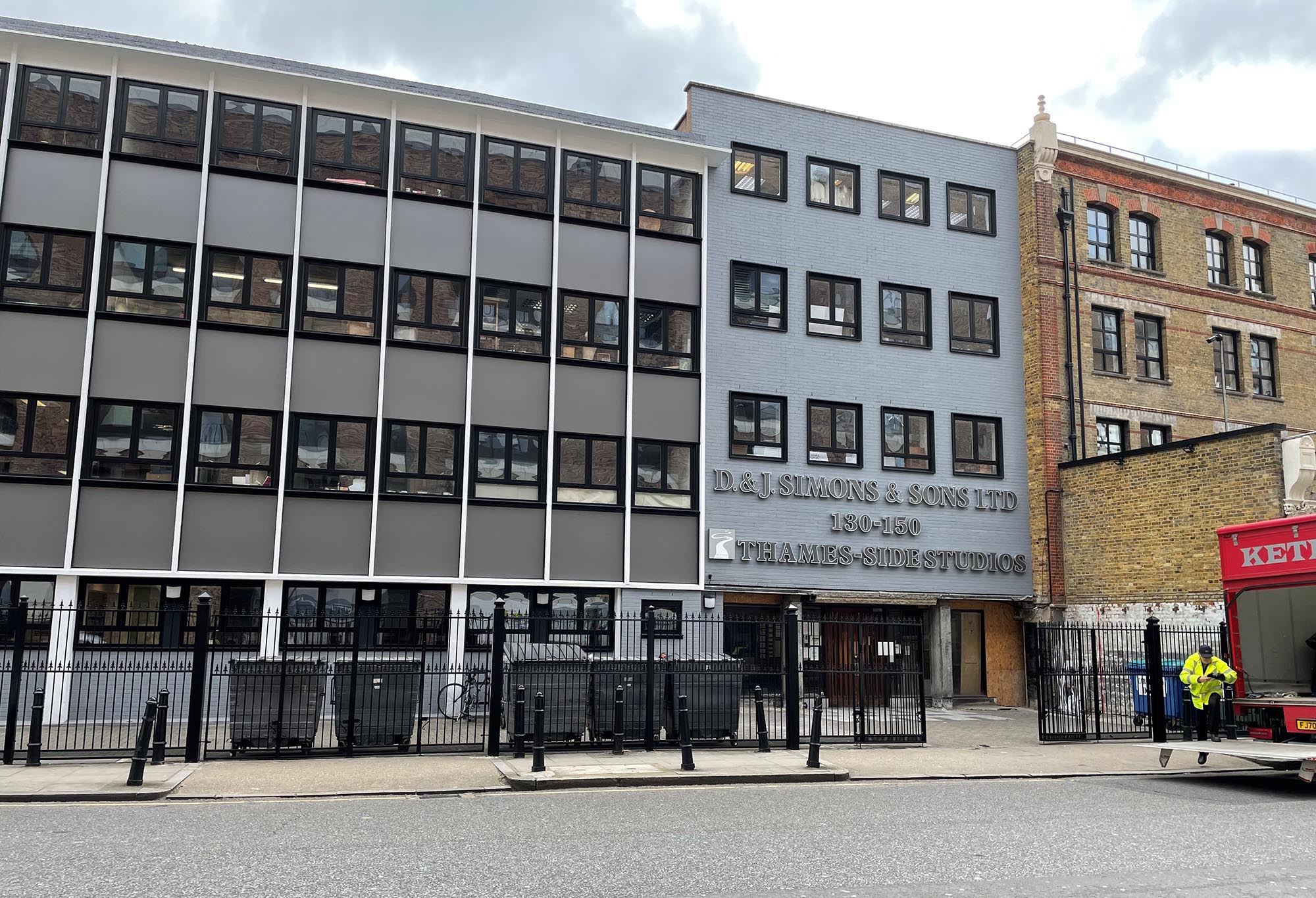History
The slideshow of images present a brief visual history of this site, including its early days as Siemens Brothers Telegraph Works factory in 1863, through to the present day as the largest single-site studio holder in the UK. These were first presented in a talk about the history of the site by Rob Detenon, General Manager, Emafyl, at Thames-Side Studios Education Space on 10 October 2018.
History of the Woolwich site
Introduction
Thames-Side Studios is part of Emafyl (Robobond Ltd). Emafyl has been on this site in Woolwich, south-east London, previously the site of the old Siemens factory, for more than 30 years, and has been providing affordable, sustainable and secure, long-term studio-space here since 2010. It is now the largest single-site community of artists, craft-makers and designer-makers in the UK. And we are committed to the continuing development of this provision. Founded in 1983 by Howard Simons, Emafyl (Robobond Ltd) manufactured picture-frame mouldings, architectural and caravan mouldings in Woolwich, winning the Queen's Award for Export Achievement in 1996. However, with the decline in the manufacturing sector in Europe and further afield, the company developed other opportunities for the site and set about developing a centre of excellence with over 500 studios, exhibition spaces, a photographic room, education space, kilning, a yard, spray shop, cafes, and classroom. Parent company, D & J Simons and Sons Ltd is a long-established family business. Founded in 1903 by David Simons, the company was first established as a manufacturer of wood turnery and a supplier to the reproduction furniture industry. Succeeded by his son Jack and later by Jack’s three sons, Stephen, Howard and Brian, the business was developed into the new millennium. The fourth generation, Daniel, Anthony, Robert and Amanda, provides family continuity and commitment well into the future.
About the site
The location of Thames-Side Studios has held a common thread of making and creativity ever since Tudor times when Henry VIII founded Woolwich Dockyard in 1512 to build his flagship Henry Grace à Dieu (The Great Harry). This is a truly unique site, where since the mid-1800’s tens of thousands of people have earnt a living as factory workers, engineers, craft workers, makers, designers and innovators, all who would have trodden the same paths that we tread today. Life was tough. It was common for children to go to work from an early age and work all their lives, and when they passed away their children would take on their jobs. To put this period into perspective, and to show how technologically advanced the United Kingdom was, at the same time that the new Siemens Brothers Telegraph factory laid their first Atlantic Cable in 1873-4 and in 1897 Queen Victoria was opening the newly built Blackwall Tunnel, in the United States Jesse James was robbing banks and gun fighting, and General Custer fought his last stand at Little Big Horn against Sitting Bull and Crazy Horse.
Emafyl and Thames-Side Studios
Emafyl began its production of extruded polystyrene making ready-made picture-frames in the 1980's led by Howard Simons. Their growth was so successful that in 1996 they received the Queen's Award for Export Achievement. In 2000 China and South Korea entered the market for ready-made frames and Emafyl,unable to compete, began a gradual decline. Between 1986-2007 Emafyl purchased Units 1, 3, and 4 followed by three derelict buildings 5, 6 and 7. They also built Units 9 to 15 on the other side of Warspite Road. Trinity Wharf and Unit 8 (The Blount Building, formerly known as Telegraph Building) were purchased and renovated in 2013.
The site and the studios are now owned by Emafyl (Robobond Ltd) who, since 1983, operated a highly successful business producing picture-frames. Emafyl still have production facilities on site, now mainly producing architectural caravan mouldings.
The studios themselves started here in 2010 from an idea by Howard Simons, the owner of Emafyl, and Rob Detenon, the General Manager. Providing affordable, sustainable and secure, long-term studio-space, initially they worked with an external company until 2016 when Howard decided to take on the running of the studios themselves.
In 2016 Thames-Side Studios was set up as a limited company as the site had become such large investment that the site owner Howard Simons decided that it was in the best interests of all to manage the site directly. Thames-Side Studios is now listed as a site of historic interest and home to one of the most densely occupied studio sites in Europe, with 500 studios containing makers, craft workers, artists, designers, designers and innovators, and facilities including exhibition spaces, a photographic room, kilning, a yard, spray shop, cafes, and classroom. Thames-Side Studios are committed to the continuing development of this provision.
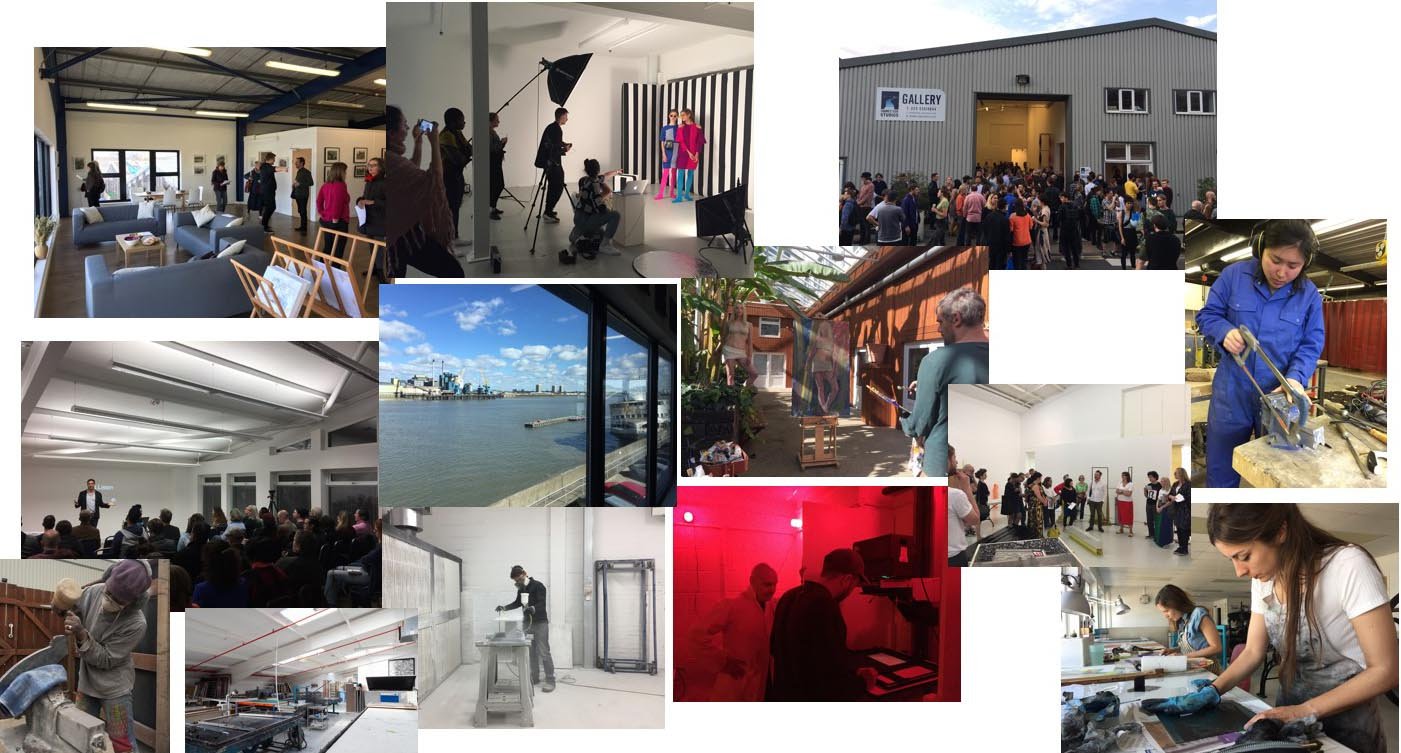 Text courtesy of a talk given by Rob Detenon, General Manager, Emafyl. Thames-Side Studios Talks, Education Space, 10 October 2018. Details here
In 2022 Thames-Side Studios opened its second site in Shoreditch, London E2. Once complete this site will house an additional 200 studios and will place Thames-Side Studios as one of the largest providers of artist studio space in the country.
Text courtesy of a talk given by Rob Detenon, General Manager, Emafyl. Thames-Side Studios Talks, Education Space, 10 October 2018. Details here
In 2022 Thames-Side Studios opened its second site in Shoreditch, London E2. Once complete this site will house an additional 200 studios and will place Thames-Side Studios as one of the largest providers of artist studio space in the country.
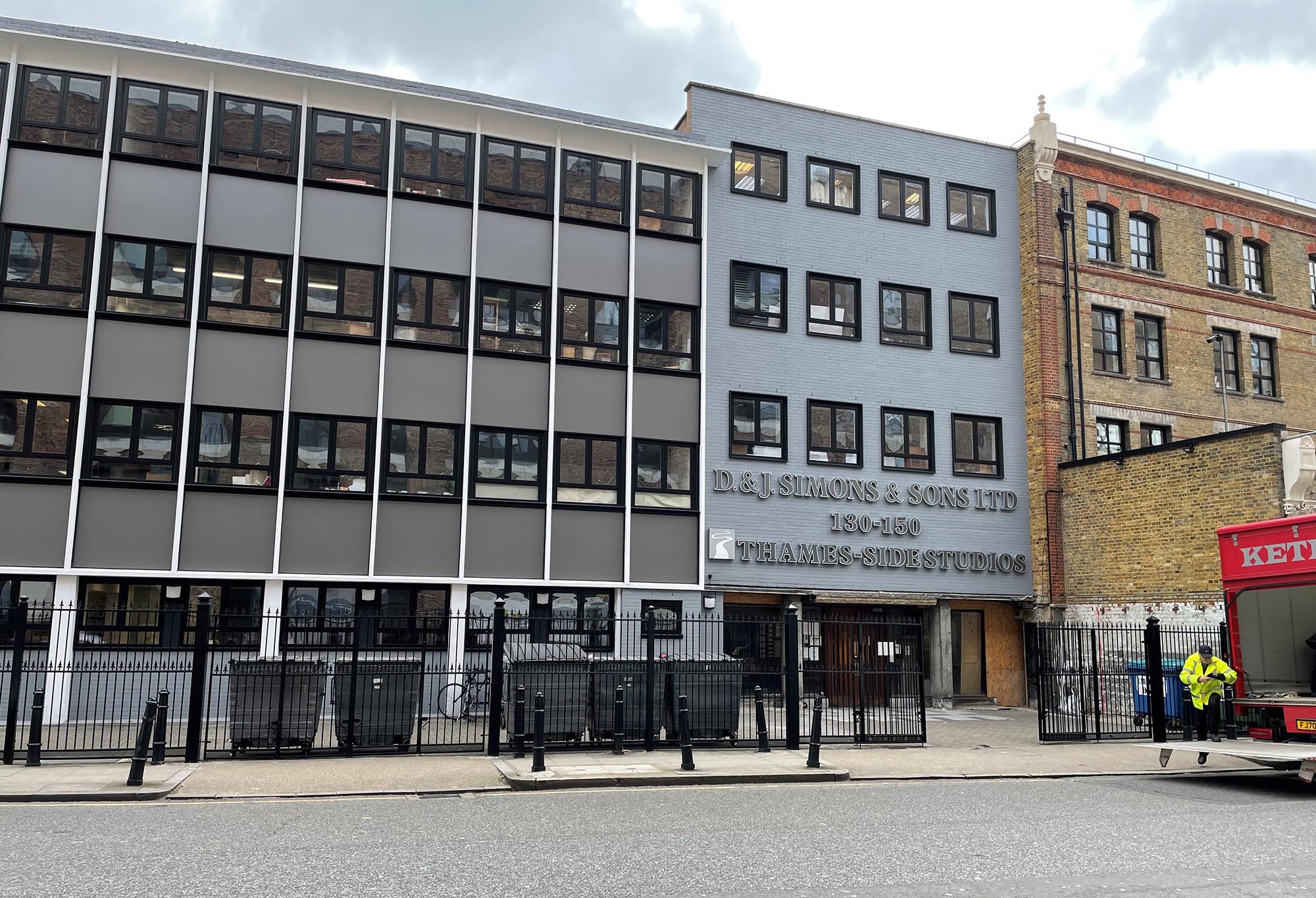
History of Siemens Brothers***
Siemens' interest in electricity began with while laying telegraph lines for the Prussian army. In 1847, he set up the firm of Siemens Brothers in partnership with brother Wilhelm, who went to England to represent the firm and work on his own inventions. In 1851, Siemens Brothers laid a deep-sea telegraph cable from England to France, the first international connection. Many other cables were laid down, and the firm also developed high electric tensions for long-distance telegraph lines.Siemens saw the potential for producing equipment geared toward the new electrical industry. Later, Siemens Brothers joined with Johann Halske to create the electrical firm of Siemens & Halske. In 1965 the company is renamed Siemens Brothers.
- In 1866, Werner discovered and applied the dynamo-electrical principle. Drawing on English physicist Michael Faraday's work on electricity around 1830, this principle is based on the fact that magnetism and electricity can be converted into each other. Though others had devised similar inventions, the Siemens firm led the way in developing dynamos for electricity generation. Siemens & Halske manufactured the first successful electric train, which in 1879 was exhibited at the Berlin International Exhibition. From telegraphs, cable laying, dynamos, and railroad equipment, the company moved into electric lighting.
- In 1880 Siemens Brothers became a public company under the name of Siemens Brothers & Co. Ltd.
- In 1914 the company was taken over by the British Government.
- A.E.I. (Associated Electrical Industries Ltd.) purchased Siemens Brothers in 1955 thus owning four independent lamp businesses: B.T.H., Ediswan, Metrovick and Siemens. In subsequently dropping these names AEI’s lamp business suffered badly.
- 1843 - Wilhelm (Sir William) Siemens goes to England on behalf of his brother Werner to sell the rights to Werner’s patented gold-plating technique.
- 1850 - A Siemens & Halske sales agency is established under William’s direction.
- 1853 - William takes over the running of the English business, which primarily involves the selling of water meters.
- 1858 - The Londoner agency is converted into an independent company known as Siemens, Halske & Co. with its own workshops.
- 1863 - A cable factory is built in Woolwich.
- 1865 - The company is renamed Siemens Brothers.
- 1868-1869 - Siemens Brothers lays the Russia to Teheran section of the Indo-European telegraph line.
- 1873-1874 - Siemens Brothers laid their first Atlantic Cable this year. The cable steamer “Faraday” was built specially for this purpose. See www.atlantic-cable.com/Cables/CableTimeLine/index1850.htm for more information.
- 1880 - Siemens Brothers is converted into a stock company called Siemens Brothers & Co. Ltd.
- 1881 - An order is received to supply electric lighting for the Savoy Theatre in London.
- 1905 - Siemens Brothers Dynamoworks Ltd. is founded in Stafford.
- 1908 - An incandescent lamp factory is built in Dalston.
- 1910 - The decision is made to expand into the business of telephone apparatus manufacture.
- 1911 - The telephone manufacturing organisation is established.
- 1914 - The shares of the English Siemens company are confiscated by the British government.
- 1929 - Contacts are re-established; a cooperation agreement is concluded.
- 1955 - Associated Electrical Industries Ltd. (A.E.I.) purchases the company. *** History of Siemens Brothers text and timeline courtesy www.britishtelephones.com/histsibr.htm
